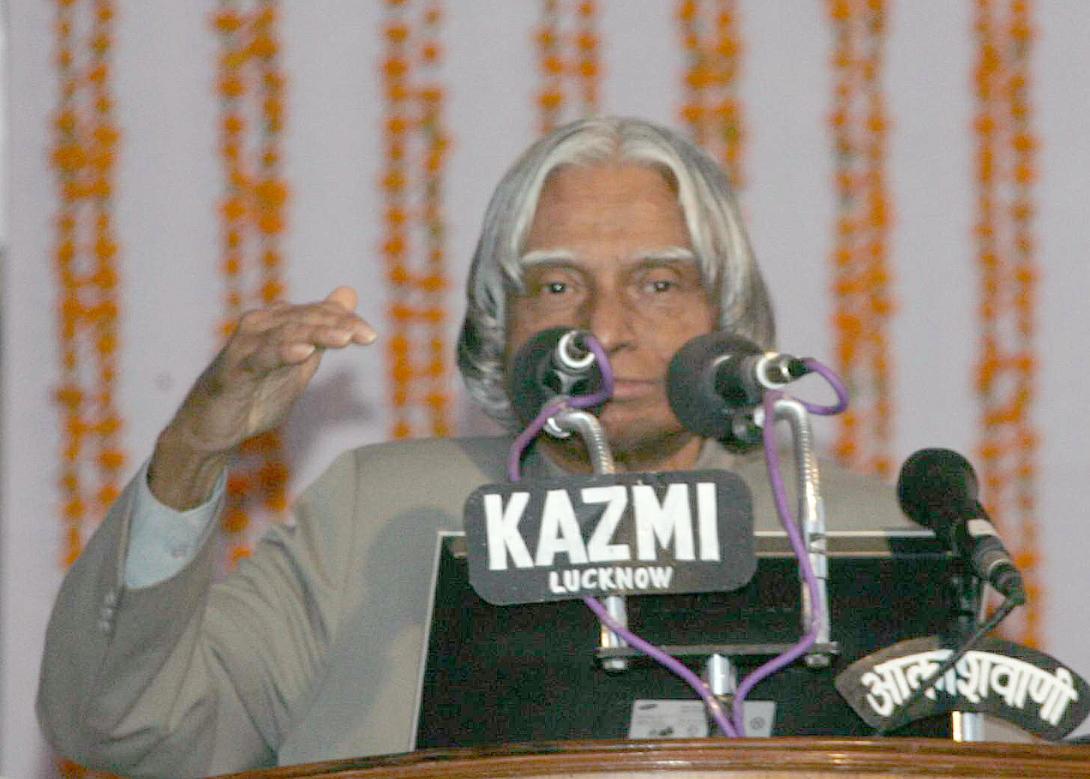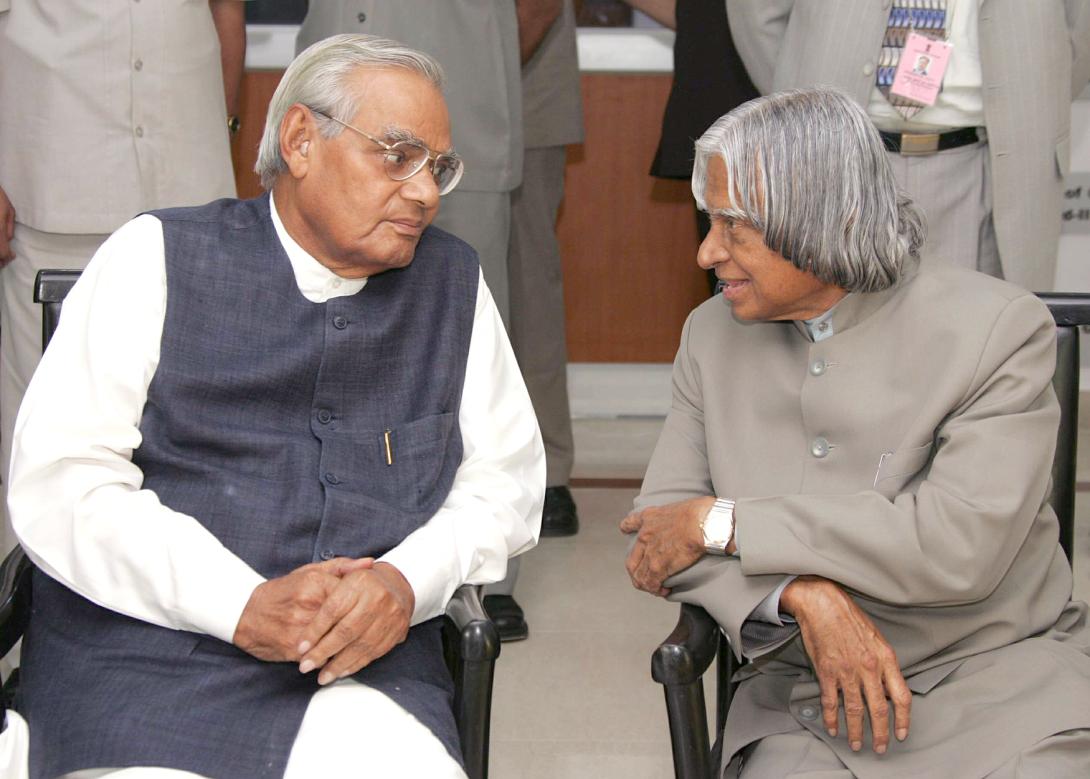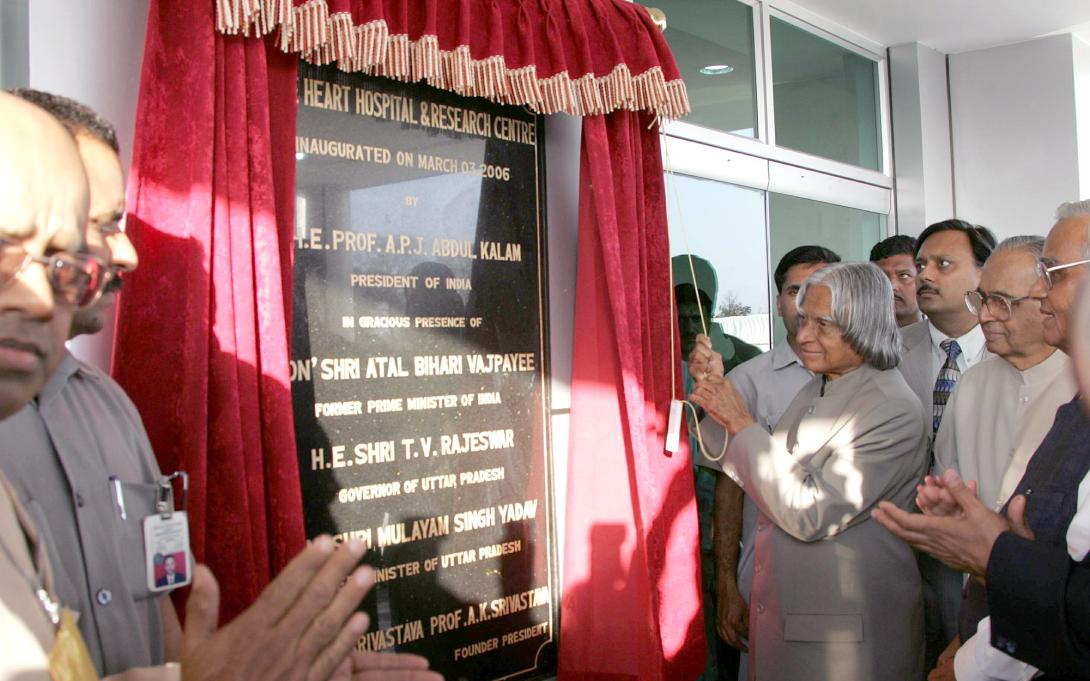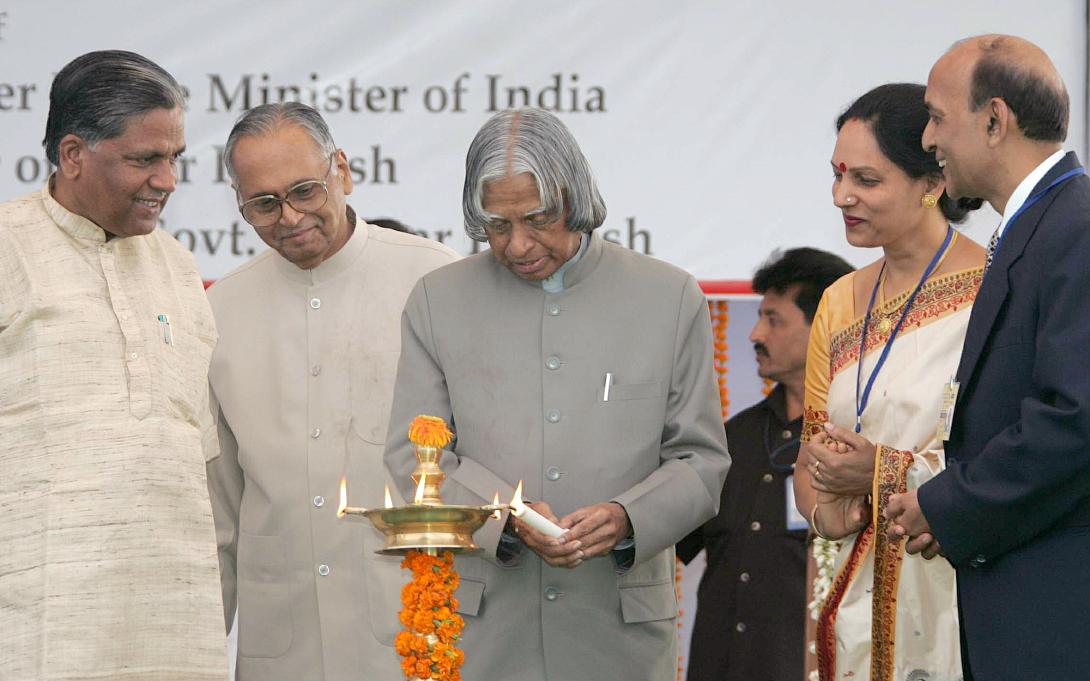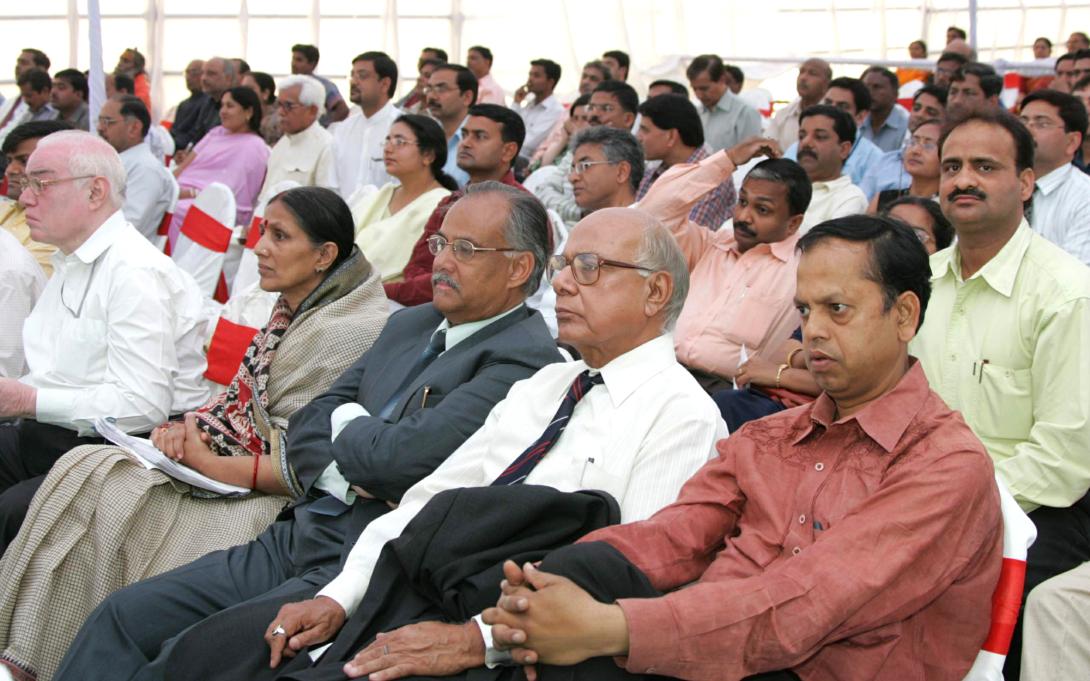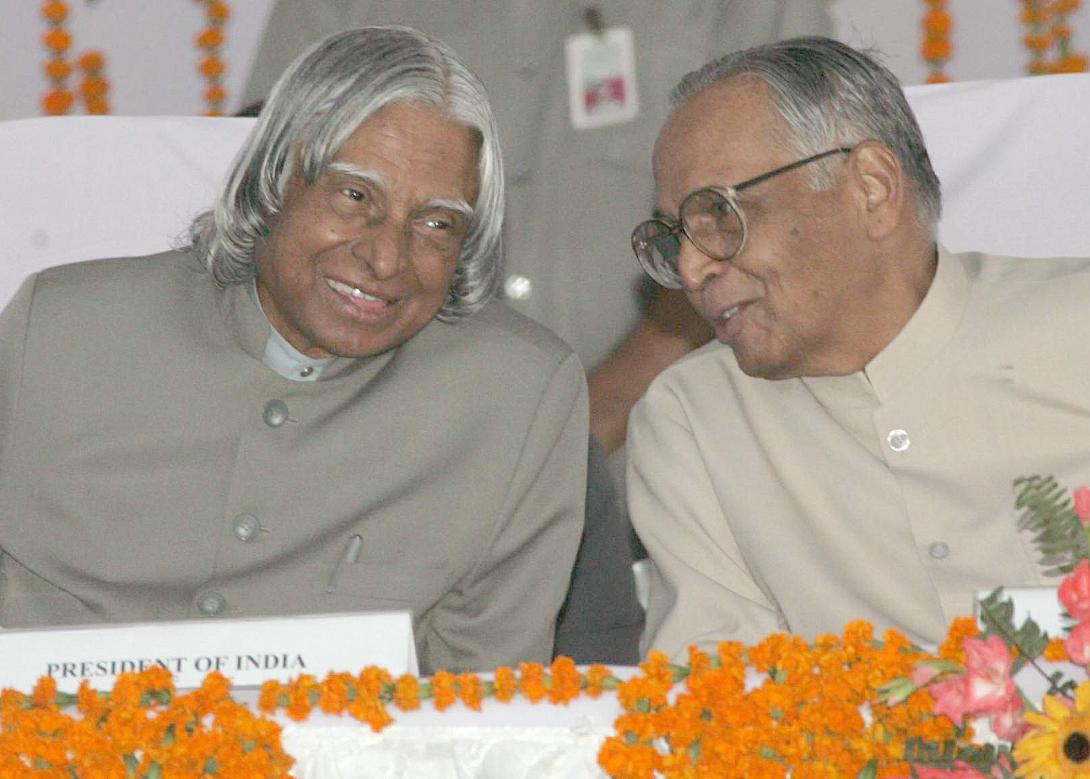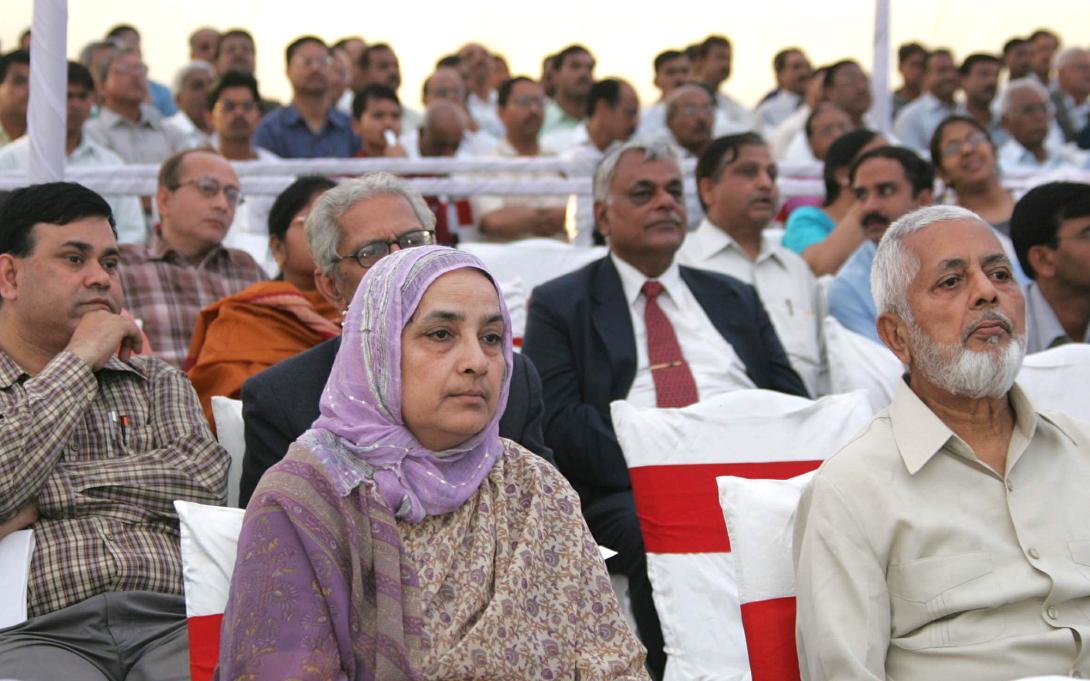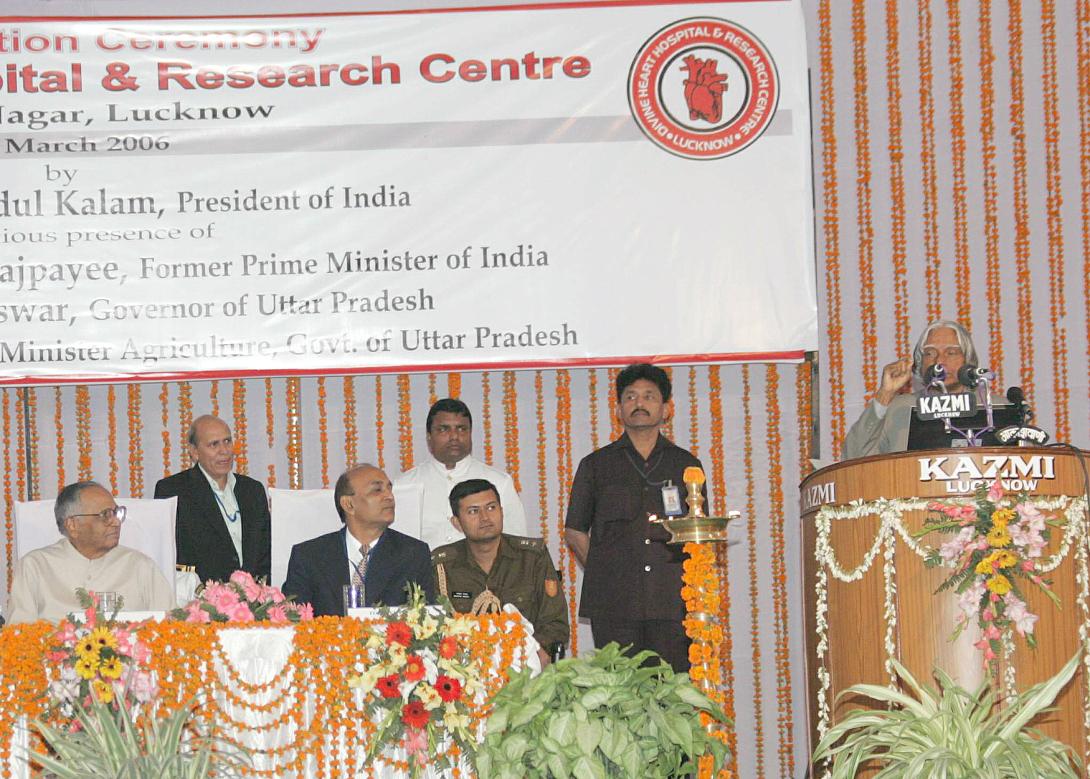Address At The Inauguration Of The Divine Heart Hosiptal, Lucknow
Lucknow : 03-03-2006
Good Hearts Treat the Ailing Hearts
I am indeed very happy to participate in the inauguration of the Divine Heart Hospital and Research Centre with 100 bed capacity exclusively for heart-care in this beautiful environment. My greetings to Hon?ble Atal Bihari Vajpayeeji, Prof Srivastava, cardiologists, surgeons, medical professionals and the distinguished guests. Hon?ble Vajpayeeji has explained to me about the origin of this hospital which has arisen due to the passion of societal service of Prof Srivastava who has over 20 years of service as Consultant, post-graduate teacher and researcher in the specialty of cardiovascular surgery. I am very happy to see that today the 25 bed hospital is transforming into a 100 bed hospital and in a few years time this will definitely graduate into a teaching and research institution for cardiology and cardiovascular thoracic surgery. A number of new hospitals are being established throughout the country for heart-care. A unique need is to have doctors and para-medical staff with good hearts to treat the ailing hearts, we need helping hands to remove the pain, and we need beautiful minds to give happiness to the patients.
Research areas
Gene Chip: Indian population is highly susceptible for coronary heart diseases that too at a relatively young age irrespective of where they live. As you are aware, Gene Chip arrays have tremendous potential to reach goals from identifying genetic variations associated with heart disease for discovering new drug targets.
Recently, I was in Chennai at Dr. Cherian?s Medical Centre. It is known as, International Centre for Biomedical Sciences and Technology (Research & Applications). There I interacted with Dr. Emmanuel, who is working in the area of Gene Chip. He says the Gene Chip can be used for finding the existence of genetic diseases including coronary artery diseases in the baby during a certain stage of pregnancy itself.
As many as 50 different mutated genes are identified as responsible for heart problems in Indian population. If a person is not having any of these harmful mutated genes, then he may not suffer from heart ailments. The Gene Chip is one which on contacting with the blood, immediately identifies the mutated genes in the person. Based on this information, proper guidance can be given to the patients and parents. The chip could also be modified to suggest to the patient?s system to develop those chemicals which in turn will help the patient recover from the present situation. Integrating molecular biology, cyto-genetics and bio-chemistry, bio-chip technology is regarded as one of the important inventions in the research of gene functions. It is far superior to molecular biological technology in terms of speed and accuracy. I would recommend the specialists of this hospital to work in partnership with International Centre for Biomedical Sciences and Technology to progress further in this area for finding the application of Gene Chip as a diagnostic tool and as a treatment regime for many cardiac diseases.
Nanotube Heart Pacemaker: Recently I was in Indian Institute of Science. There I found that Prof AK Sood, Professor of Physics and his student Shankar Ghosh have studied, experimented and found that the liquid flow in carbon nano tubes can generate electric current. One of the most exciting applications to emerge from the discovery is the possibility of a heart pacemaker ? like device with nanotubes, which will sit in the human body and generate power from blood. Instead of batteries, the device will generate power by itself to regulate defective heart rhythm. The IISc has transferred the exclusive rights of the technology to an American start-up Trident Metrologies. They will develop the prototypes and commercialize the gas flow sensors. I am sure Cardiologists and cardio vascular surgeons will definitely be interested in this new discovery by our Indian scientists.
Experience in stem cell: During my visit to various laboratories, I happened to see the beginning of stem cell research for different purposes including brain research. I would like to share with you an important stem cell research application in the field of cardiology. When I met Dr. P. Venugopal, Director, All India Institute of Medical Sciences (AIIMS) a famous cardiovascular and thoracic surgeon, he told me about his experiences. He said in one of the cardiac diseases, where conventional medical and surgical treatment were ineffective because of the affliction of the heart muscle, use of autologous bone marrow stem cells implantation into the diseased heart muscles had been applied in order to improve the function of heart muscle. He has treated over hundred patients using this technique. This is expected to open new frontiers in the treatment of patients for regeneration of heart muscles, thereby giving new hope for the patients suffering from end stage heart disease. Now, I would like to discuss about the management of cardiac diseases.
Management of Cardiac Diseases
Multi-dimensional solutions are available for management of the diseases based on my discussion with experts. The solutions include medicinal treatment using Statins, which lowers the cholesterol in the blood by reducing the production of cholesterol by the liver. Statins block the enzyme in the liver responsible for making excess cholesterol. However one has to be careful about the side effects and take adequate precautions while treating the patients. The second is through angiography and angioplasty using stents. Advancements in stents have resulted in the introduction of drug quoted stents which hold a tremendous promise in the near perfect cure of coronary artery disease. I understand that very soon we may have bio-degradable stents. The next generation stents may be nano-stents. If the heart blockage is severe, valve defect and death of cells in the heart due to less blood supply etc. surgical intervention will be necessary.
Progress in Treatment of Coronary Artery Disease
We have all witnessed the treatment of cardiovascular disease moving from very invasive to less invasive methods. In the seventies bypass surgery was the big news, in the eighties it was balloon angioplasty and in the nineties it was the stent.
Now, moving a step further is a totally non-invasive treatment - EXTERNAL COUNTER PULSATION (ECP), a truly non-operative, non-pharmaceutical, safe and effective treatment which has made big news in the west. ECP is FDA (USA) approved and finds reference in medical and cardiology textbooks. The success of ECP can be judged from the fact that in USA the insurance sector reported that the reimbursement for ECP has gone up by 6 % whereas that of other procedure like angioplasty, bypass surgery, etc. has come down by 7%. Now the treatment is available in most of the leading hospitals of the world.
In India, ECP is available at Sibia Medical Centre, Ludhiana besides Escort Heart Institute and Research Centre, New Delhi, Peoples General Hospital, Bhopal, Jamnagar and at Cherian?s hospital at Parumala in Kerala.
It is well known that following bypass surgery - only 75% patients are symptom free for 5 years or more and only 50% after 10 years or more. The number of patients having recurrence after bypass, ballooning and stenting is increasing and for them ECP is the only FDA approved treatment available which is documented to increases blood supply to the heart by 20-42%, to the brain by 22-26% and to the kidneys by 19%. ECP also increases heart's output. More patients now prefer non-invasive treatments. With improved cerebral circulation patients may notice improved memory, etc. Members of the Divine Heart Hospitals and Research may like to study this technique of ECP(EXTERNAL COUNTER PULSATION) for providing non-invasive cardiac care to the patients. Now, I would like to discuss about lifestyle intervention needed for preventing occurrences of heart diseases.
Life style intervention
There is a need to propagate the importance of appropriate food habit and life style among the urban population to combat the situation of increased occurrence of heart ailment. Hospitals in the country should take proactive steps to counsel their clients in a family atmosphere for ensuring reduction in this number in the years to come. Another feature which has been noticed is that there is a competition, between cardiologists and surgeons in treating heart cases. The ideal practice should be to provide only the minimum essential treatment instead of going in for surgical intervention as a routine management of the disease.
It has been reported that the repeated occurrence of heart ailments is caused by diet, smoking, and lack of exercise and uncontrolled diabetes. All these factors can be controlled by an appropriate life style intervention. I have seen the change of life style pattern practically taking place in Global Hospital and Research Center, Mount Abu. There was a joint project of Defence Institute of Physiology and Allied Sciences (DIPAS), DRDO and the Global Hospital and Research Center for studying the effect of "holistic lifestyle intervention" on the patients suffering from Coronary Artery Diseases during the year 1997-98. The project involved both Control Group and the Experimental Group. The Control Group was subjected to conventional treatment whereas the Experimental Group was supported by an intervention involving low fat, high fiber vegetarian diet, aerobic exercises and meditation. This three-dimensional psycho-physiological mind-body approach in treating heart patients of the Experimental Group resulted in dissolution of angiographic plaque and improvement in microcirculation of blood in heart muscles of the patients. The treatment was also supported by participation of spouses and other family members of the patients, leading to a unique family system approach to Medicare.
Networking the Interventional Cardiology and Cardiac Thoracic Surgery Resources
I would request the Divine Heart Hospital and Research Centre to launch a website that will become the common platform amongst the Cardiologists and cardiac surgeons in the country and abroad to provide the connectivity for the thousands of specialists spread in different parts of the world. The website can document the case studies and special treatment regimes followed by different specialists and also the novel diagnostic techniques used by them. You could also include provision for the common man to ask questions about his specific problems connected with cardiac diseases which can be answered by a panel of specialist doctors. This will also lead to automatic generation of a database of such patients and make treatment of these diseases available by specialists at an affordable cost. However, the confidentiality and anonymity of the patient has to be maintained by the website. This website can be used for creating awareness among the people for prevention of cardiac diseases.
Communication
Recently, there was a meeting of cured patients, their doctors and a few social workers. One important point emerged during the interaction was that the relationship between the patient and doctor extends to patients? family. This in turn, transmits effective messages from one family to another family on advice to prevent the heart diseases, necessity of periodic checks, the dietary habits and the need for life style changes including physical exercise for good heart-care. Actually, I believe this good contact between the doctor and patients is comparable to that of a teacher and student. I request every doctor of this hospital to play the role of a teacher in advising every family on heart disease prevention and methods to lead a healthy life. I hope you will find time for this noble action
Conclusion
When God first created the human being, it took million and millions of years to get the right shape. He went on experimenting and finally he realized the shape he wanted. Once realized, he gave life. First the man said, ?I thank you, Almighty. Second thing he did, he smiled at God. Almighty was very happy, that his creation has done two things correctly. Then, God was preoccupied for some time, later when God looked at the man and found something is missing in him. He created the fire in Milli-seconds and created Shaitan out of fire. He asked Shaitan to prostrate before the first human being that he created in his image. The Shaitan refused to prostrate. He said, "Oh! Almighty you have created me out of fire, I am a superior creation". The God was taken aback. He thought for a while and decided to integrate the man and Shaitan into a one single system, that is the human race what we are. If we want to become close to Almighty God, let our mind and hand be kind to human beings who are suffering particularly with heart disease. That means we have defeated the Shaitan within us. May God bless you to be close to God?s image. Your kindness will flow through your actions, thousands and thousands of patients will be relieved of the heart pain and they will say "Thank you doctor" with a smile. That means you are in God?s image.
In this context, if you don?t mind, dear doctors, can you take with me a five point oath? The oath is as follows:
1. We the Cardiovascular and Thoracic Surgeons realize that we are in God?s mission.
2. We will always give part of our time for treating heart patients who cannot afford.
3. We will treat at least 20 rural patients in a year at minimum cost by going to rural areas.
4. We will encourage the development of quality indigenous equipments and consumables by making use of them in all our operations assuring the reliability of the products.
5. We will follow the motto "Let my brain remove your pain and bring smiles".
I inaugurate the Divine Heart Hospital and Research Centre and my best wishes to the members of this hospital for success in their mission of providing quality heart-care to the people of Lucknow and neighbouring region.
May God bless you.

